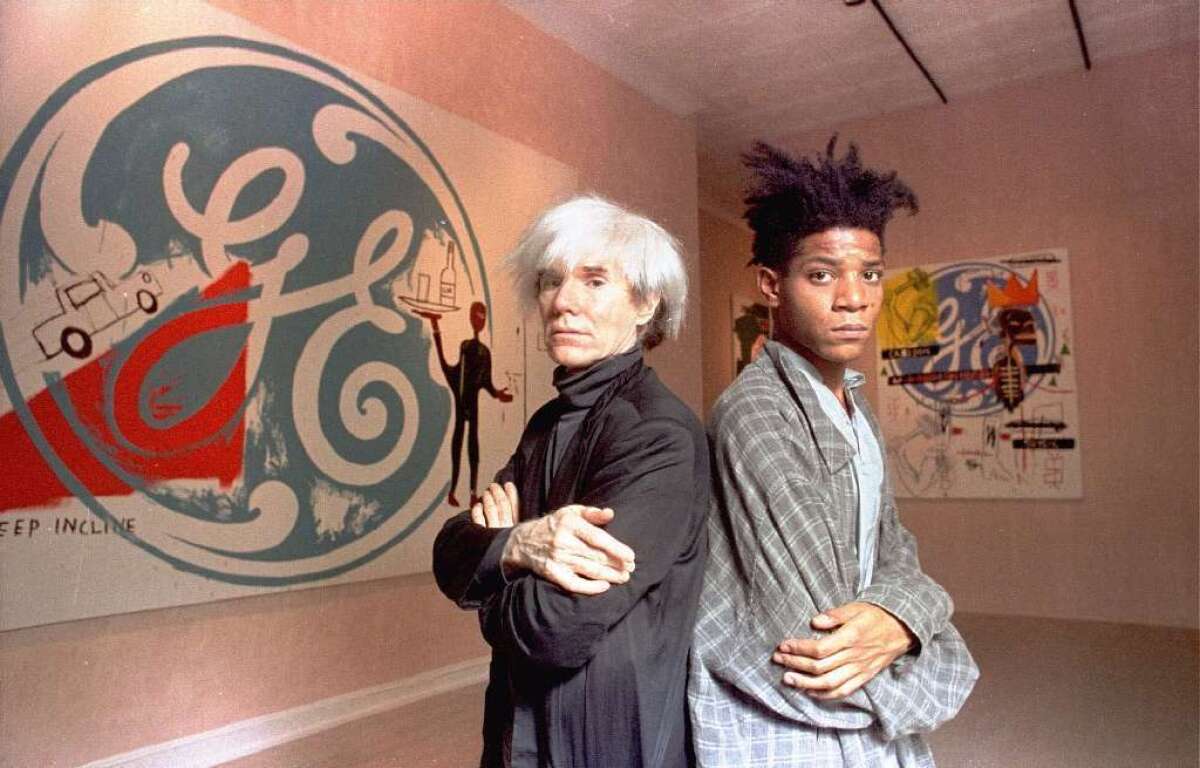Andy Warhol Foundation finishes spree of art giveaways

- Share via
This post has been updated. Please see below for details.
The Andy Warhol Foundation for the Visual Arts said it has finished one of the biggest art giveaways of all time, sending the remaining contents of what rocker Lou Reed once dubbed “Andy’s Chest” to museums and colleges and universities in 48 states and 10 foreign countries.
The 322 institutions benefiting from the recent art-giving spree all agreed to exhibit their gifted Warhols within a few years, said Joel Wachs, president of the Manhattan-based foundation. The Warhol Foundation’s announcement Monday that it had wrapped up the art-donation phase of its existence said that the result “is likely to be the largest wave of exhibitions ever dedicated to a single artist.”
Wachs, who as a Los Angeles councilman played a part in the early 1980s launch of L.A.’s Museum of Contemporary Art, put the number of donated works and photographic negatives and contact sheets at 52,000 since the Warhol Foundation was established after the artist’s death in 1987.
Warhol’s will specified that his unsold art and earnings from his copyrighted images should go toward furthering the cause of visual art. The final avalanche of giving — 14,847 pieces over the past two years — focused on Warhol’s Polaroid and black and white photography and also included prints of his work, Wachs said.
Scanning a list of recipients from his office in New York, Wachs came up with 10 universities and 10 museums in Southern California.
The roster of museums receiving works includes MOCA; Los Angeles County Museum of Art; Getty Museum; Hammer Museum (technically a UCLA affiliate); Huntington Library, Art Collections and Botanical Gardens; Orange County Museum of Art; Laguna Art Museum; Palm Springs Art Museum; Museum of Contemporary Art, San Diego; and Santa Barbara Museum of Art.
Academic institutions reaping gifts include UC Riverside’s California Museum of Photography and campus galleries or museums at Cal State Northridge, USC, Cal State Los Angeles, Scripps College and Pomona College in Claremont, Cal State Long Beach, Cal State Fullerton, Cal State San Bernardino and UC Santa Barbara.
The biggest beneficiary is Stanford University’s Iris & B. Gerald Cantor Center for Visual Arts, which received nearly 8,000 Warhol negatives and their accompanying contact sheets. It committed to digitizing everything. Wachs said Warhol Foundation officials also liked Stanford’s proposal to use the materials not just for gallery display and instruction of art students but across the university, including a program in which images from Warhol and the 19th century photographic pioneer Eadweard Muybridge will help medical students learn about the human body.
The Warhol Foundation’s first big philanthropic gesture was gifting thousands of prime works to establish the Andy Warhol Museum in Pittsburgh, the artist’s hometown. The museum opened in 1994. Warhol was 58 when he died from heart failure after gall bladder surgery.
The foundation had announced in 2012 that it would sell or give away all its remaining Warhol holdings so it could bolster its endowment and focus strictly on making grants to nonprofit art organizations and art writers.
Wachs said that the endowment now stands at $285 million and generates about $14 million a year for grants. The hope is that further art sales, investment gains and earnings from licensing Warhol’s images for commercial use will lift the endowment enough to boost its annual grantmaking 30% or more, to $18 million to $20 million.
The sales forums arranged by Christie’s auction house have included live public auctions, online bidding and private sales. They’ve brought in $30 million, Wachs said, with an estimated $70 million worth of Warhols to be marketed. Everything that’s being sold has been turned over to Christie’s for storage and preservation, he said, saving the foundation about $3 million a year.
Although his foundation helps fund nonprofit exhibitions, Warhol, who began as a fashion illustrator, lives on in the commercial sphere, his images licensed over the years to festoon packaging or containers of such products as Beck’s beer, Dom Perignon champagne, Absolut vodka, Pez candy dispensers and a Japanese brand of condoms. Wachs said the fees generate about $4 million a year for the foundation.
Now that the Andy Warhol Foundation has given up its tangible links to its namesake by divesting itself of his art, Wachs said its connection to the artist will depend on making grants that reflect his values.
“All we do is in the spirit of Warhol,” Wachs said, whether it’s funding scholarly exhibitions of established artists at major museums or fanning the first flickers of fresh creativity with a recently established $1.25-million-a-year grant program for smaller local organizations that funnel the money to artists in their communities who are struggling to create and be discovered.
“It’s something we want to nurture,” Wachs said, “because that’s where the future Andys are going to come from.”
For the record, Jan. 6, 11:05 a.m.: An earlier version of this post incorrectly said that the Andy Warhol Foundation has donated 62,000 of the artist’s works to museums and universities since its inception following his death in 1987. The correct figure is 52,000.
Follow https://twitter.com/boehmm of the LA Times for arts news and features
More to Read
The biggest entertainment stories
Get our big stories about Hollywood, film, television, music, arts, culture and more right in your inbox as soon as they publish.
You may occasionally receive promotional content from the Los Angeles Times.











